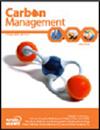马来西亚东部近海砂拉越盆地枯竭气田CO2注入的临界速率分析
IF 3.2
4区 环境科学与生态学
Q3 ENVIRONMENTAL SCIENCES
引用次数: 1
摘要
摘要本研究旨在解决确定碳酸盐贫化气田CO2注入临界速率的挑战和策略。在本研究中,临界速率是地层损伤开始前的最大允许注入速率。地层损坏的原因可能是由于现场调动或截留迁移细粒,导致流动路径堵塞。本研究对不同的岩石流体系统进行了彻底的调查,以评估安全注入极限,因为每个岩石流体系统的临界速率不同。本研究还探讨了CO2注入对碳酸盐岩地层的地球化学作用。除此之外,还考虑了CO2-盐水-岩石多相流动特性引起的孔隙度和渗透率变化,以了解CO2封存到碳酸盐岩地层中的可行性。本研究讨论了模拟CO2注入碳酸盐贫化气田的实验设计。因此,在储层条件下,使用具有代表性的天然岩心、CO2和合成地层盐水进行了几次岩心驱替实验。压差(ΔP)的突然变化、CO2多速率流后收集的污水的分析以及pH读数是考虑条件已达到临界速率的关键指标。实验结果表明,在超临界CO2多速流作用下,岩心存在细粒迁移、结垢和盐沉淀现象。考虑到这些与注入能力相关的问题和挑战,本研究建议在现场规模注入之前采用最大注入速率。本文章由计算机程序翻译,如有差异,请以英文原文为准。
Critical rate analysis for CO2 injection in depleted gas field, Sarawak Basin, offshore East Malaysia
Abstract This study aimed to address the challenges and strategies to determine the critical rate of CO2 injection into a carbonate depleted gas field. In this research, the critical rate is the maximum allowable injection rate before formation damage initiation. The cause of formation damage could be due to in-situ mobilization or trapping of migratory fines resulting in plugging the flow path. This study performed a thorough investigation of a different rock-fluid system to evaluate the safe injection limit, as the critical rate is different for each rock-fluid system. The geochemical effect of CO2 injection toward carbonate formation was also investigated in this research. Other than that, the porosity and permeability changes due to CO2-brine-rock multiphase flow characteristics were considered to understand the feasibility of CO2 sequestration into carbonate formation. This research discussed experimental design to mimic the CO2 injection scenario of CO2 into carbonate depleted gas field. Therefore, several core flooding experiments were conducted under reservoir conditions using representative native cores, CO2, and synthetic formation brine. Abrupt changes in differential pressure (ΔP), analysis of effluent collected after CO2 multi-rate flow, and pH reading are the key indicators to consider that the condition has reached a critical rate. The experimental result demonstrated the existence of fines migration, scale formation, and salt precipitation after the core was subjected to supercritical CO2 multi-rate flow. Considering these issues and challenges associated with injectivity, this study recommended a maximum injection rate prior to field scale injection.
求助全文
通过发布文献求助,成功后即可免费获取论文全文。
去求助
来源期刊

Carbon Management
ENVIRONMENTAL SCIENCES-
CiteScore
5.80
自引率
3.20%
发文量
35
期刊介绍:
Carbon Management is a scholarly peer-reviewed forum for insights from the diverse array of disciplines that enhance our understanding of carbon dioxide and other GHG interactions – from biology, ecology, chemistry and engineering to law, policy, economics and sociology.
The core aim of Carbon Management is it to examine the options and mechanisms for mitigating the causes and impacts of climate change, which includes mechanisms for reducing emissions and enhancing the removal of GHGs from the atmosphere, as well as metrics used to measure performance of options and mechanisms resulting from international treaties, domestic policies, local regulations, environmental markets, technologies, industrial efforts and consumer choices.
One key aim of the journal is to catalyse intellectual debate in an inclusive and scientific manner on the practical work of policy implementation related to the long-term effort of managing our global GHG emissions and impacts. Decisions made in the near future will have profound impacts on the global climate and biosphere. Carbon Management delivers research findings in an accessible format to inform decisions in the fields of research, education, management and environmental policy.
 求助内容:
求助内容: 应助结果提醒方式:
应助结果提醒方式:


